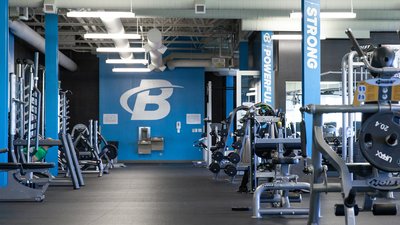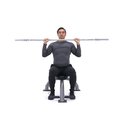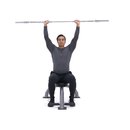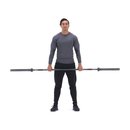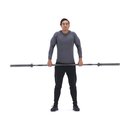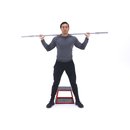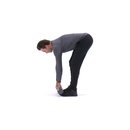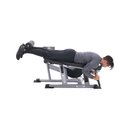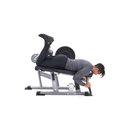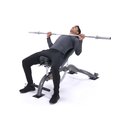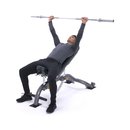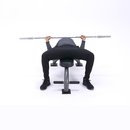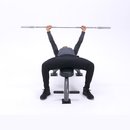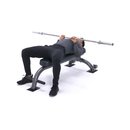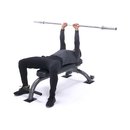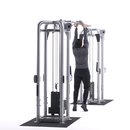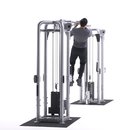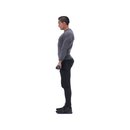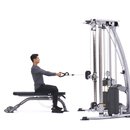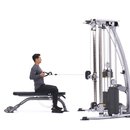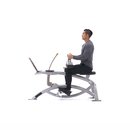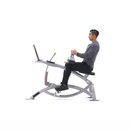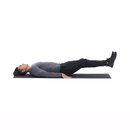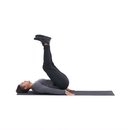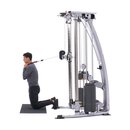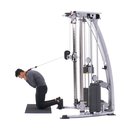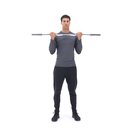Being involved within the fitness industry over the last few years as a personal trainer and contest coach, I have seen it all. The great thing about the fitness lifestyle is that to get your ideal physique, there are many roads you can take. There is no right or wrong, absolute best way to train.
Gain Strength In Record Time
Some people follow high intensity while others follow high volume. Then we have the various intensity boosting techniques such as: drop sets, super sets, giant sets, forced reps, etc. No matter which style of training you employ in your day-to-day workouts, there is a common denominator—the repetition!
Current opinion is that to generate the greatest results from your gut busting workouts in the gym, you should always use a full range of motion when performing each repetition. I have always felt that this definition was too generalized a response.
I believe we should call it a "full exercise-specific range of motion", as I believe this gives you a greater appreciation of what is being referred to. I do believe that for complete growth you do need to train the muscle within its complete range of motion from full exercise-specific extension to flexion, but do you need to do this on every set that you do during a workout?
The Weakest Link!
No matter which exercise you choose, somewhere along the "full exercise-specific range of motion" path will be a weak spot. This weak spot (i.e., the bottom of a bench press) is what will limit the total amount of weight you can lift.
We now know that to generate the greatest muscular response from our training we need to apply the greatest force to the working muscle. Does this mean that by performing full range repetitions that we are actually limiting our potential growth?
Yes and no.
As I said above, I believe that full range repetitions are needed in every training protocol, just not on every set. In my professional opinion (which I have proven with real world results in the gym) I believe that a session comprising of both full reps and half-reps can generate tremendous growth in next to no time.
The Partial Rep
To start, what is a partial rep, or more importantly, how do we effectively perform it? A partial rep is defined as only using half the exercise-specific range of motion for a particular exercise. The key though is to always use the strongest portion of the rep. Taking the bench press as an example; this would be lowering the bar halfway down and then powering it back up.
What Does This Accomplish?
Using the bench press again as the example, lets say the maximum weight you can handle for 6 reps is a total of 100kg. When you break it down, 100kg is the maximum amount of weight you can handle in the "weakest" part of the repetition—the bottom portion.
Have you ever noticed that in the final few inches that you can power it back up with more power than in the bottom position? That's because at this stage of the rep, you are stronger.
When you use 100kg, you are being limited by what you can use in the weakest portion of the repetition. Doesn't it make sense to remove this and train where you can generate the greatest overload on the working muscles?
If you can handle 100kg in the weakest area, you might be able to maximally handle 120kgs in the final stages of the repetition. How does this translate into growth? Well, you are applying a greater force to the working muscle, which will generate in greater overall stimulus.
Greater stimulus coupled with an effective nutrition and supplements program will result in faster increases in size and strength!
Why Not Remove Full Reps Altogether?
I am still a firm believer in the effectiveness of "full exercise-specific range of motion" repetitions for complete growth, but you cannot dispute how partial reps can help you handle more weight. I say why not employ both methods into your training program.
Recently with my own training I decided to see how effective this style of training would be. It looks good on paper and that's great, but unless it delivers meaningful results, then discussion is over. I am only interested in proven strategies for quick muscular gains.
The 6-Week Growth Spurt!
I decided to put this theory to the test to see for myself what it would deliver. Without any dietary or supplementation changes, I packed on 4.5kg of lean mass in only 6 weeks, and my strength increased at a rate that even startled me.
As an experienced athlete, that's just crazy. I now have a few athletes following the same system and they are also starting to experience the same dramatic results.
Is There A Catch?
Of course there is a catch. The catch is that when it comes to exercise selection, you need to pick the one exercise for that training session that you can handle the most weight on. Typically, we are looking at bench presses, barbell presses, squats and dealifts.
Believe it or not, I generated my results from only 8 partial sets per week in conjunction with my regular training session.
My Training Cycle Breakdown
To obtain the greatest benefit, you want to limit using partial reps to only the biggest exercises—squats, deadlifts, bench presses and barbell presses. With other exercises such as lying triceps extensions and barbell curls just cannot deliver the same results.
They are great mass builders in their own right, but nothing compares to the big four.
Conclusion
So there you have it. By employing this exact training program, I gained 4.5kgs of lean mass in only 6 weeks and my strength increased like nothing else—naturally. Give it a go and see how powerfully it can work for you too.

